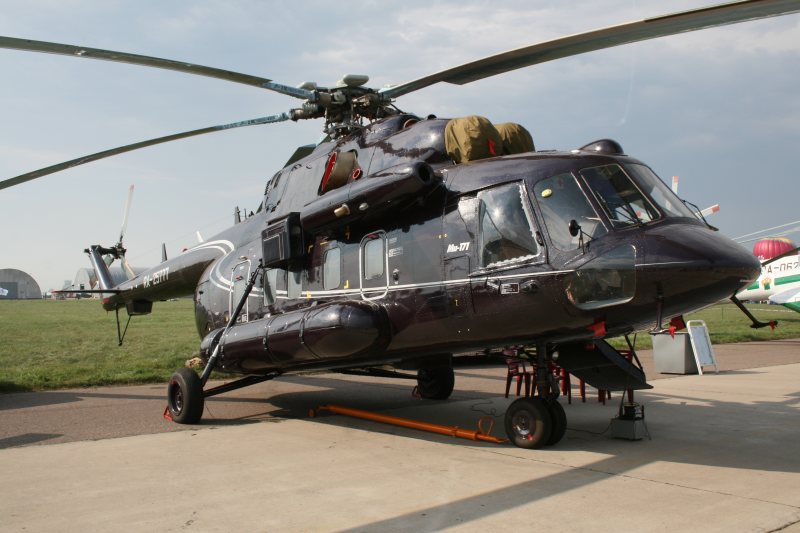Russia is set to win another order for 59 multi role Mi 17 V5 helicopters in addition to the 80 ordered earlier, retaining Moscow’s traditionally dominant lead in selling military aircraft to New Delhi.
Chief of Air Staff Air Chief Marshal P V Naik told India Strategic in an interview that the delivery of the first lot of 80 Mi 17 helicopters, ordered in 2008, would begin from later this year while the Indian Air Force (IAF) was now processing another request for an additional 59 helicopters.
IAF’s recent request for 42 SU 30 MKI aircraft has already been cleared by the Ministry of Defence, taking the total number of this air dominance combat jets order to a sizeable 272. IAF has also signed a contract with Rosoboronexport, Russia’s sole arms exporting agency, to upgrade its fleet of Soviet-vintage Mig 29 fighters and Il 76 airlifters while the Indian Navy has placed an order for 45 navalised version Mig 29K shipboard jets.
The order for the 272 SU 30 MKIs, is the biggest aircraft deal in numbers with Russia after that of the Mig 21s signed with the Soviet Union from 1968 onwards (Rs 2 crores or about $ 300,000 per aircraft at that time).
Aircraft were cheap in the Soviet days but now, an Su 30 MKI is around $ 50 million (Rs 230 crores) each inclusive of some support packages and Transfer of Technology (ToT). The total cost for 272 SU 30 MKIs works out to $ 13.6 billion.
As for the Mig 21s, India bought more than 400 of them, and only around 140 of these aircraft, upgraded to Mig 21 Bis configuration with new avionics and BVR (Beyond the Visual Range) missiles, are to serve in the IAF inventory for another six or seven years. The upgrade has been undertaken by Russian and HAL facilities.
The Mig 29K deal touches nearly $ two billion and the upgrade of Mig 29s for the IAF nearly $ one billion. A Mi 17 V5 helicopter reportedly costs around $ five million (total nearly $ 700 million for 139 machines).
India has also purchased six Il 78 midair refuelers and three IL 76 aircraft for accommodating the Israeli Phalcon electronic radars, two of which have been delivered to India. The third Phalcon is due by end-2010. Meanwhile, IAF has ordered two more Phalcons on the same IL 76 platform.
Notably, as the Phalcon radars are heavy, the IL 76 airlifters have been upgraded with more powerful PS-90 engines, the cost though for them is quite high and not considered appropriate for upgrading the IAF’s fleet of less than 20 old Soviet-vintage Il 76 aircraft.
All these aircraft have served the Indian Air Force well; the Il 76 has a remarkable safety record, the Mi 17 has sustained the lifeline of the Indian troops in Siachin heights, and the Mig 25 gave IAF an intrusive capability that no missile or aircraft could intercept. The only point is that the Soviet vintage machines are old in age as well as in technology and need replacement with newer platforms with newer and extreme technologies to last 30 to 40 years in the coming decades.
Air Chief Marshal Naik disclosed that the IL 76s, first acquired in April 1985, are also under life extension under a contract with Russia. “The life extension of IL-76 aircraft would involve complete overhaul of airframe at the vendor’s premises in Russia… The first aircraft has already been positioned and the servicing has commenced. Various other upgrades would be executed in India. Post-servicing, the aircraft would be available to us for more than 10 years,” he said.
India is also a partner in the develoment of Multi-role Transport Aircraft (MTA) and Russia’s Fifth Generation Fighter Aircraft (FGFA), which it is committed to support financially and then buy as and when they are developed and operational.
On a conservative estimate accordingly, Russia has already won nearly $ 20 billion worth of orders and commitments from India for its aircraft and helicopters. (Sale of other systems for the Army and Navy, like the aircraft carrier Gorshkov for about $ 2.35 billion, ships, submarines, T 90 tanks and missiles etc, are not included in this estimate for Indo-Russian defence trade).
The erstwhile Soviet Union also dominated India’s defence supplies, and nearly 70 per cent of the equipment with the Indian Army, Navy and Air Force was acquired from it. The total cost of this entire equipment however is estimated at a little more that $ 30 billion, or roughly, around 30 per cent more that what the IAF alone has commited over the last 10-12 years since the acquisition of Su 30s.
All the figures are approximate because every deal has add-ons in the form of spares, spare engines, maintenance support and training. ToT is extra. Some figures are not readily available with us.
It may be noted that all the deals with Russia have been single-vendor, based on bilateral discussions and negotiations.
For that matter, except for the tender for the 126-plus Medium Multi Role Combat Aircraft (M-MRCA), for which there is a multi-vendor global Request for Proposals (RfP), the IAF has acquired all its existing aircraft and helicopters from single vendors.
For instance, the Mirage 2000 was acquired from France, the Jaguar from an Anglo-French partnership involving Breguet (now Dassault Aviation) and British Aircraft Corporation (now BAE Systems), and the Mig 21, Mig 23, Mig 25, Mig 27 and Mig 29 from the Soviet Union.
Pointedly however, the prices of Soviet equipment were much lower those days, and also, what were then called “Friendship prices” for countries like India, Egypt, Syria and Iraq.
Today, as the Gorshkov deal has demonstrated, market prices rule; Russia looks for better prices and India, for better technologies. Russia though has demonstrated its capability to sustain its edge in aircraft and helicopter sales to India.

























